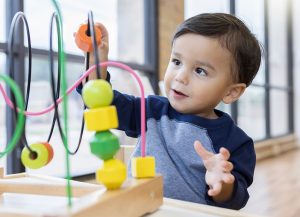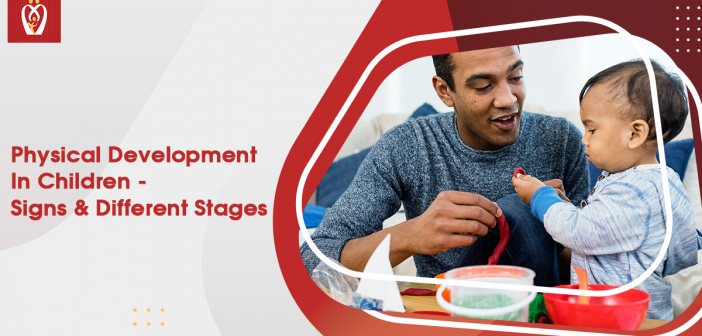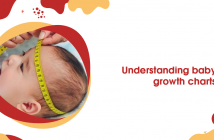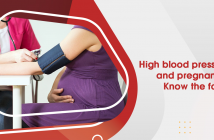As a parent, you constantly worry about your child’s physical development. Children grow rapidly between the ages of 2 and 5. Often we ask pediatricians about what normal physical development will be in a child and what is expected and not.
Once they hit the age of 2, children tend to have a slower growth rate; this is when parents are concerned as there is a change in their child’s eating habits, and they are worried if the child is growing normally or not.
The best way to know if your child is going through average growth is by closely monitoring and tracking their growth. There is a growth spurt during infancy, but once they have passed the spurts, their growth rate will become steady and standard until they are adolescents.
Newly become parents or parents are sometimes not educated regarding their child’s physical development. So when they see a rapid growth rate during infancy becoming slow after their child has turned 2, they get scared if something is wrong with the child. In fact, the child now has normal and standard development.
In this blog, you will learn what physical development is in a child and the different signs and stages of growth in them.
What is child physical development?

Physical development is when a child undergoes physical and biological changes between infancy and adolescence. As a human, you experience a lot of physical development, and that’s how the human cycle is. There is a difference between the physical development of a boy and a girl, and they must undergo these changes. As a parent, you should be aware of the physical and biological changes that will happen to your child.
Following are the signs of the child’s physical development
Limbs Your child’s arms and limbs will grow longer, and they will be proportionate to their torso as well as their head. One day you remember your child being this chubby, and the next you know that he or she has become slimmer, then don’t worry, it’s completely normal. Your child will become slimmer and distinctively thinner than he was as an infant.
-
Brain development
Brain development is very crucial for a child so that they can perform complex
mental and physical tasks. There is a significant growth in the neural fibers in the brain, particularly in the frontal lobes, during early childhood. It is also observed that around 2 years of age, a human brain is already 70% of its adult size; when his child turns 6 or 7, their human brain is almost 90% of its adult size. The increase in motor skills can be attributed to this growth. It is also a common practice to measure the circumference of the head to figure out the growth rate of the brain.
2) Muscle growth
Muscle growth will be faster, and it is crucial to aid a child’s normal movement. The child’s muscles of the arms and the legs, which are known to be larger than the muscles of the toes and fingers, will grow faster. The muscles of the toes and fingers are smaller, and hence they grow at a slower rate as compared to the legs and arms. This is the stage where the child need’s proper nutrients through their food to help their growth process. You need to make sure that your child is getting an adequate amount of nutrition inside his body.
3) Motor skills
Have you ever wondered how you are able to perform your daily tasks so efficiently?
Like running, brushing your teeth, wearing and washing clothes. The ability to do our regular tasks so quickly is due to motor skills. Motor skills are associated with the child’s daily ability to perform a task. We often look in awe when a child learns these tasks slowly. One day you see them crawling, and the next thing we know, they have started walking and eating with their own hands, etc.; this is possible because of the development of their motor skills. Motor skills can be categorized into
-
Gross motor skills
They are also known as large motor skills. Gross motor skills are required to perform general tasks like running, jumping, walking, and even balancing their body while they are engaging in these tasks.
Walking with a comfortable balance, running in a single direction or the way you want, kicking a ball, and jumping over objects are some regular tasks that can be performed with gross motor skills. (child physical development)
-
Fine motor skills
They are also known as small motor skills; these involve more defined and precise and are necessary to perform complicated tasks. They are also associated with the brain development of the child.
Using cutlery, brushing teeth or combing hair, drawing or painting, picking up small objects, etc., happens due to fine motor skills.
4) Height
By 12 months, the infant’s length is about 50% of its birth length. Their birth length doubles when they reach the age of five years old. Girls reach half of their adult height when they are about 19 months, and boys reach half of their adult height around 24 months. There is a height difference between girls and boys after a certain period. (child physical development)
5) Weight
Our weight changes throughout our whole life. At the age of one, the weight of the infant will be three times that of their birth. The growth rate tends to slow down after the child’s first year, and between the ages of one and six, he will gain around 2kgs every year. (child physical development)
6) Teeth
Babies are born with the following teeth.
4 seconds molars,4 first molars,4 canine teeth,4 lateral incisors,4 central incisors, 4 lateral incisors, 4 central incisors.
The teeth in the center of the bottom jaws often come through first, sometime between 4 months and 10 months. Children tend to get all their 20 teeth by two and a half years. These baby teeth are also called milk teeth, replaced by permanent ones between the ages of 5 and 13.
Stages of the Physical development.
Every child is different, so don’t worry if you think you are a child going through a slower growth rate. If you still notice any concerning symptoms, visit your child’s pediatrician.
Babies can sit and crawl and can hold their heads up by nine months
Between the age of two and four, they learn to walk, run, jump, climb stairs with help, building blocks, and hold crayons.
By age four and six, they learn to climb stairs without help, write and even eat with their hands comfortably.
Every child is different, so the development process is different for every child. Let your child explore things; let them walk, run and jump. Allow them to paint and hold items. Walk with them and help them learn something, ensure that they get all the nutrients their body needs, and let them enjoy their childhood.
How can Nurturey help you?
The PinkBook by Nurturey is a digital substitute for N.H.S. Redbook. The PinkBook allows pregnant women and parents to access their child’s health records, view upcoming health checkups, and access trusted N.H.S. information about pregnancy and parenting. PinkBook will let you ease into your pregnancy and parenting journey. You can also schedule your appointments with G.P./midwife through the Nurture PinkBook App. Communicate with your doctor about anything concerning or troubling you regarding your pregnancy and post-pregnancy. You can also get your prescription refills from your doctor. For more information, visit Nuturey at https://www.nurturey.com. You can download their App from the Google play store and Apple store.







